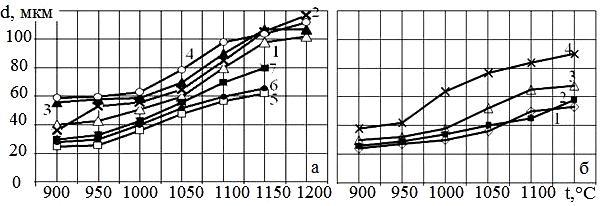
Faculty: Physical and Metallurgical
Speciality: Material Science
The austenite is the major structural characteristic of the steel defining its structure and properties. The austenite state in a steel is influenced by the various range of factors in many respects depending on conditions of production. Frequently the processes occurring in austenite’s a condition in a steel as a result of real technological operations are not considered both the steel gets structure and the properties, caused influence of those or other factors. Thereupon interest represents studying of influence of some factors, such as initial structural conditions and influence of speed of heating on growth of grain of an austenite. The analysis of the modern literary and literary data concerning research shows the big reserve possibilities for the control kinetics alpha>gamma transformations [1-3].
The analysis of a situation existing for today in sphere of consumption of metallurgical production shows that in structure of consumption of metal rolling the greatest share occupies hot rolled plates & sheets which has occupied more of third of all volumes of the metallurgical enterprises [4]. Among plates &sheets the greatest demand is for steel plates which used not only in production of pipes, but also in shipbuilding, nuclear and chemical mechanical engineering for manufacture of gas pipelines, locomotives, tractors, fastening etc.
Steel plates from low carbon low alloyed steels for giving to it of a necessary complex mechanical and technological properties is exposed to various kinds to the thermal and deformation-thermal processings providing obligatory them austenitization. At the same time austenitization steel plates is during a number of various processing, such as normalization, annealing , quenching, thermal improvement (quenching + high-temperature tempering).
In this connection researches of influence of an initial structural state and speed of heating on growth of grain of an austenite at heat treatment low carbon low alloyed steels have been carried out. As materials for researches samples would be taken from a steel 10HSND and 17G1S in the sizes 10x20mm, thickness 12mm, selected from hot rolled plate of current production.
For carrying out of researches samples were exposed to thermal processing which consisted of preliminary normalization, annealing , quenching, thermal improvement and repeated heating to temperatures 900-1200°C with the subsequent quenching in 10 %-s' water solution of table salt. On fig. 1 the data about the austenite size grains of steels 10HSND and 17G1S is cited at their repeated heating after various modes of thermal processing. It is established that average diameter of grain of an austenite at repeated heating is appreciably defined by an initial condition of steels. Apparently from fig. 1, the least size grain of a steel have after preliminary improvement (i.e. at initial sorbite structure), larger grain is formed in annealing condition (i.e. at rough ferrite - perlit structure). And the most considerable influence of initial structure is shown on a steel 10HSND.

On fig. 2 the data about growth of grain of an austenite preliminary superheated to 1200°C of steel 17G1S became presented at repeated fast and slow heating to temperatures 950-1100°C after various modes of heat treatment. From fig. 2 it is visible that at slow (5-7°C/min) heating to 900°С preliminary superheated and the tempered steel enough large grain of the austenite which average diameter is equal 70 mkm is formed, with rise in temperature to 1100°С grain tends to crushing. Similar character of change at slow heating is known on an example crystallographically the ordered structures (martensite, bainite), however in details was not considered on an example ferrite - perlit structures, and speaks effect of partial restoration of initial large grain and its spontaneous recrystallization.

The found out features of change in the size of grain of an austenite low alloyed steels, produced plate, depending on initial structure and speed of heating should be considered at appointment of definitive modes of their thermal processing.
In references it is not found the sufficient data for low carbon low alloyed steels and the put questions demand the further consideration.